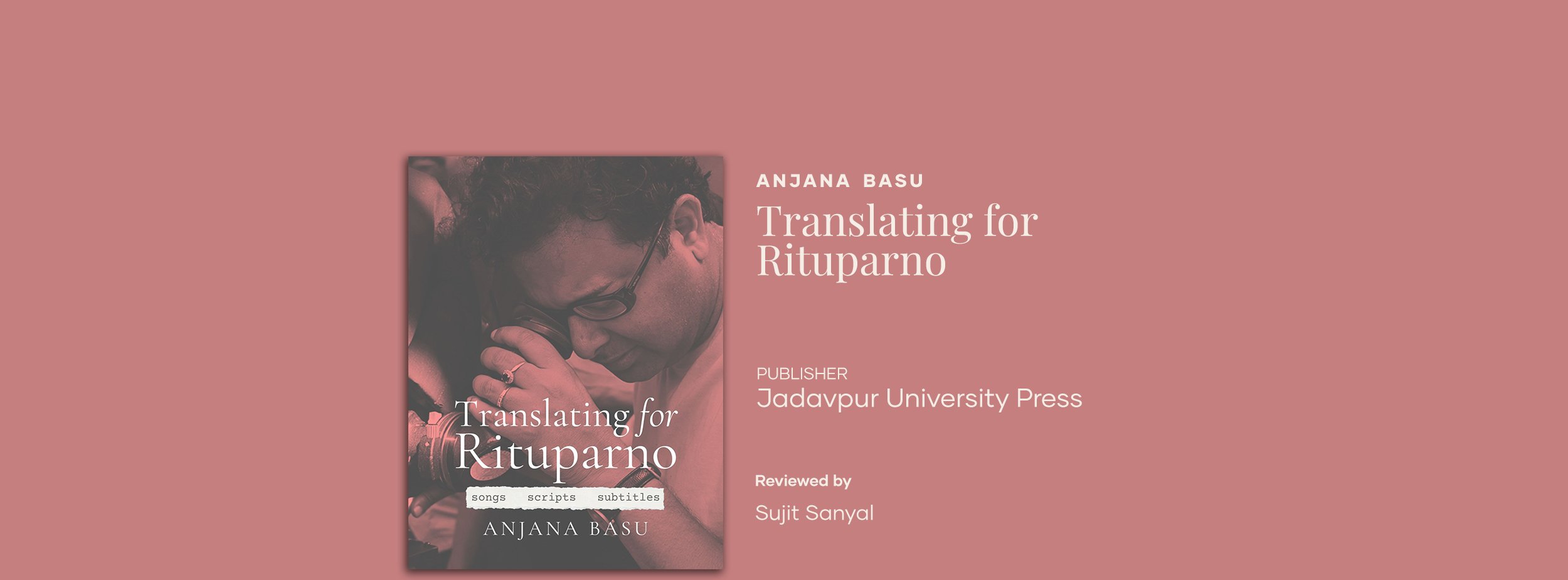
The 800-page book, which possibly weighs about one and half kilograms every page, is full of promises in every gram of it. And it keeps all of them!
For many of us, who were his colleagues in advertising in Kolkata and claimed a bit of pride when his first film was released (“apno aadmi”, as I told my Dilliwalla friends), Rituparno soon developed a niche which made him a milestone in Indian Cinema. We loved his style of storytelling, especially the Bengali films — the way he represented the middle-class Bengali syndromes, his use of music, and the way he handled his actors — even getting Suchitra Mitra to act in one of his films.
His scripts were strong and though we had access to scripts of foreign films during our college days — the British Council had a shelf full of scripts and reviews by Kenneth Tyler — access to scripts of Indian films was not easy to get by. Some publishers did venture into publishing. It was easier to get a copy of Bergman’s or Antonioni’s film scripts than that of Ghatak.
Rituparno has been the milestone director after the era of legendary directors in Bengali cinema and in a short span made a series of films which helped him create a niche for himself and it was, but natural, that one day people would be in search of his film scripts — especially his earlier works. Not attempting to express my opinion about his later films, his earlier ventures had a total stamp of the (copy)writer in Rituparno. The copywriter used here would refer to an advertising writer, not a plagiarist, as that is what they were called before the word content writer entered the domain.
Now, after a long wait, translations of many of his scripts have been published by Jadavpur University Press, and the translations are by his collaborator, english subtitle writer and herself an advertising writer, Anjana Basu. And it just couldn’t get any better! In addition, Anjana, who was his colleague at Ram Ray’s Response, shared a wonderful chemistry with Rituparno the person, and what we have in the Foreword is a very honest opinion about the filmmaker. She has clearly mentioned that somewhere — “Rituparno had run away from Rituparno.” The sentence was not to criticize him, but to explain how deeply she was invested in his films.
The book has scripts of Chokher Bali, Raincoat, Antarmahal, Dosar, Last Lear, Khela, Parapar, The Crowning Wish, The Truth Seeker, Sunglass, and some unfinished works like Guru, A Prince, Poison, 2 Funerals and The Princely Imposter. In addition, there is a section, Odds and Ends, and the collection ends with an Envoi by Moonmoon Sen.
Even though the translation of many of the scripts of his earlier films like Hirer Angti, Unishe April, Dahan and a few others are missing — and you have to read the ‘Foreword’ and the ‘Introduction’ by Dr Shoma A Chatterjee to know why — the collection is a treasure trove. For anyone interested in filmmaking, script writing, movie buffs, people who want to stay connected to the middle class Bengali intelligentsia, this is truly a Collector’s Item.
Some of the scripts like that of Chokher Bali have a few Note Pages like Character Notes, Relationships explained for those not familiar with Bengali terms (Bhaipo, Chhannatala), Prologue, Synopsis, Glossary, Geography, Binodini and Why I wrote Chokher Bali. Similarly, Raincoat, Khela, Antarmahal, and The Crowing Wish have similar notes — but I wish such notes were there for all the films covered in the book.
For Anjana, whose first encounter with Ritu was at the iconic HTA Office at Bondel Road, being briefed to translate the advertising of a brand of potato chips on a freelance, working with Rituparno must have been a very challenging task. It was just not the translation, but interacting with him, his moods and that too with a person who kept challenging himself, his associates — in fact, society as a whole! You can figure that out as you go through the scripts, the amount of hard work and skill that must have gone in. All translations are a challenge — but in this case, one had to understand the film maker, the nuances, the creative treatment, and the finer points of storytelling. Considering that the script writer-cum-filmmaker was Rituparno Ghosh, I think Anjana has delivered a gift to her audience. I must say it was very thoughtful of Jadavpur University Press to take up this project, perhaps as a tribute to one of their alumnus.
To all readers of this magnum opus, my suggestion — and I repeat — would be that they spend good time with the Foreword and the Introduction before hitting the scripts. Also you may like to go through the chat show Kahaani Koncerti hosted with Anjana and her colleague, Abeer Chakrabarty, at —
